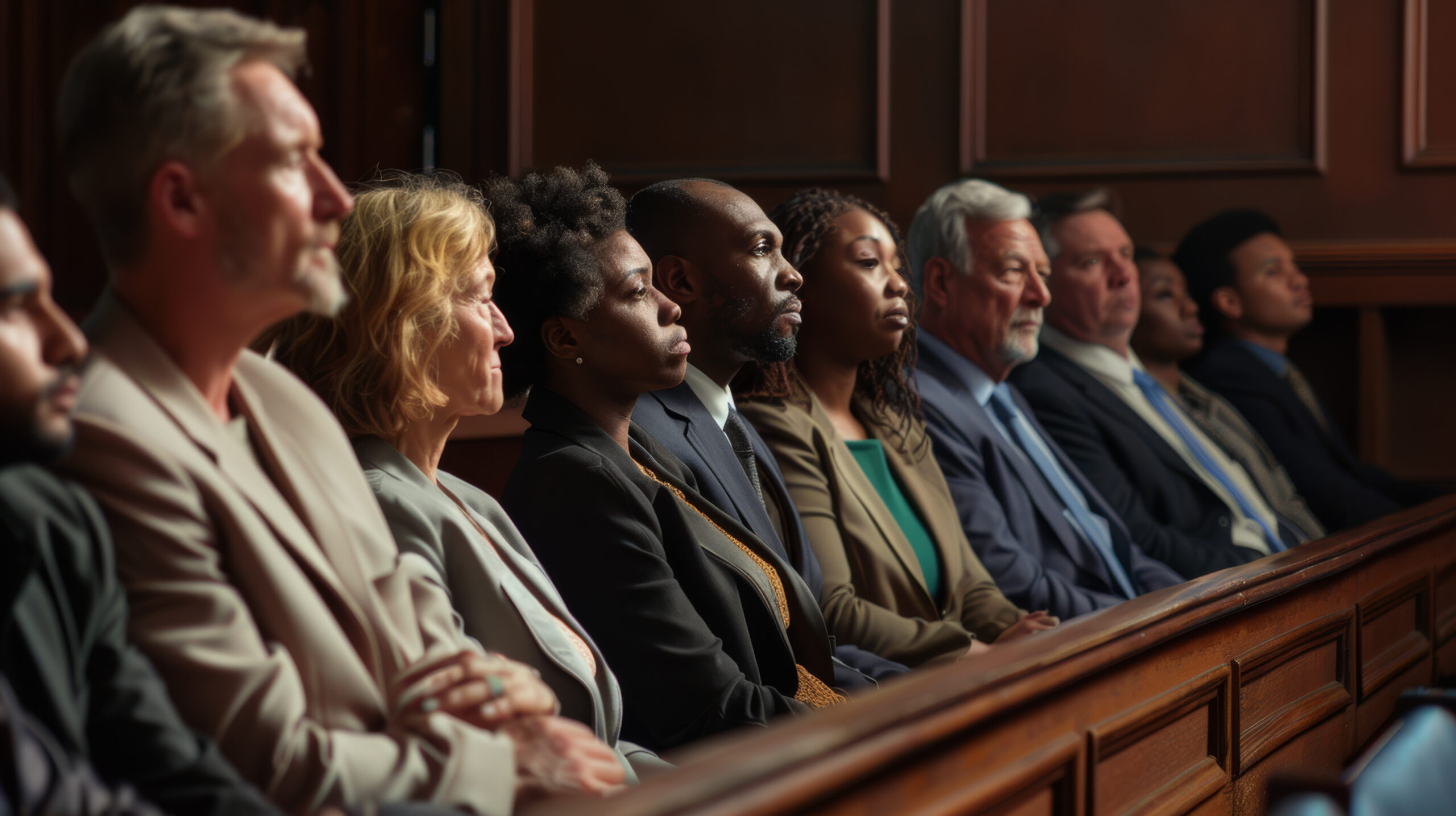The Importance of Jury Selection in High-Stakes Trials

The outcome of a high-stakes trial often hinges on one crucial decision made before any evidence is presented or arguments are delivered: selecting the right jury. In complex litigation involving millions of dollars, catastrophic injuries, or business-threatening disputes, the composition of the jury can determine whether justice is served or a case is lost before it truly begins. Each potential juror brings their own experiences, biases, and perspectives into the courtroom, making the selection process a sophisticated art that requires deep legal knowledge and strategic thinking.
At Callahan & Blaine, PC, we know jury selection is not merely a preliminary procedure but a fundamental component of trial strategy. Our 29 experienced trial attorneys have spent over 40 years refining the art of jury selection in high-stakes cases, including securing the largest jury verdict in Orange County history, which totaled $934 million.
The Strategic Foundation of Jury Selection
Jury selection, formally known as voir dire, serves as the cornerstone of any successful trial strategy. This process enables attorneys to identify potential jurors who may be unable to fairly evaluate the evidence or harbor biases that could influence their decision-making. In high-stakes trials, where the consequences of the verdict can be life-changing, this selection process becomes even more critical.
The stakes are particularly high in complex business litigation, catastrophic personal injury cases, and insurance disputes. When facing multi-million-dollar claims or defending against allegations that could damage a company’s reputation, attorneys must carefully evaluate each potential juror’s background, experiences, and attitudes. A juror who has previously been involved in a similar situation may approach the case with preconceived notions that could influence their judgment.
Effective jury selection requires attorneys to ask probing questions that reveal not just obvious biases but subtle predispositions that might affect a juror’s ability to remain impartial. This process demands both legal acumen and psychological insight, as attorneys must quickly assess each individual’s personality, communication style, and potential reactions to the evidence that will be presented.
Evaluating Potential Jurors
Several critical elements must be carefully evaluated when assessing potential jurors in high-stakes litigation.
Professional Background and Life Experience
A juror’s professional background often provides valuable insights into how they might approach complex legal issues. Someone who works in finance may have different perspectives on business disputes than someone in healthcare might have on medical malpractice cases. Understanding these professional influences helps attorneys predict how jurors might interpret evidence and testimony.
Personal Experiences and Biases
Past experiences can significantly impact a juror’s objectivity. A person who has been involved in a serious car accident might be more sympathetic to an injury victim, while someone who has been sued before might be more skeptical of a plaintiff’s claims. Identifying these experiences during voir dire allows attorneys to make informed decisions about jury composition.
Communication Style and Personality
Some jurors are natural leaders who may influence others during deliberations, while others prefer to follow the group. Understanding these personality traits helps attorneys predict jury dynamics and select individuals who will contribute positively to fair deliberations.
The Art of Questioning During Voir Dire
The questioning phase of jury selection represents one of the most challenging aspects of trial preparation. Attorneys must craft questions that elicit honest responses while avoiding inquiries that might offend or alienate potential jurors. The goal is to create an environment where individuals feel comfortable sharing their true thoughts and experiences.
Effective questioning techniques involve asking open-ended questions that encourage dialogue rather than simple yes-or-no responses. For example, instead of asking “Have you ever been in a car accident?” an attorney might ask “Can you tell us about any experiences you’ve had with insurance companies?” This approach often reveals more meaningful information about a juror’s attitudes and potential biases.
Successful voir dire strategies include several key components:
- Establishing rapport and trust with potential jurors to encourage honest responses
- Using neutral language to avoid leading questions or appearing biased
- Listening carefully to not just what is said, but how it is said
- Observing body language and non-verbal cues during responses
- Following up on vague or incomplete answers to gather more details
In high-stakes cases, attorneys must also be prepared to address sensitive topics that might arise during the trial. This requires careful phrasing and a respectful approach that acknowledges the difficulty of discussing personal matters in a public setting. The ability to navigate these conversations skillfully can make the difference between identifying problematic jurors and inadvertently creating hostility.
Protecting Your Rights Through Strategic Jury Selection
When facing high-stakes litigation, you need experienced trial attorneys who understand the complexities of jury selection and can protect your interests from the very beginning of the trial process. Our team at Callahan & Blaine, PC has successfully handled thousands of complex cases over our 40-year history, developing sophisticated strategies for identifying and selecting jurors who will fairly evaluate the evidence.
From catastrophic personal injury claims to complex business disputes, we have the knowledge and skills necessary to navigate the jury selection process effectively. If you are facing high-stakes litigation, do not leave your future to chance. Contact our experienced trial team at (714) 241-4444 or through our contact form to discuss how we can protect your rights and interests through strategic jury selection and aggressive trial representation.

